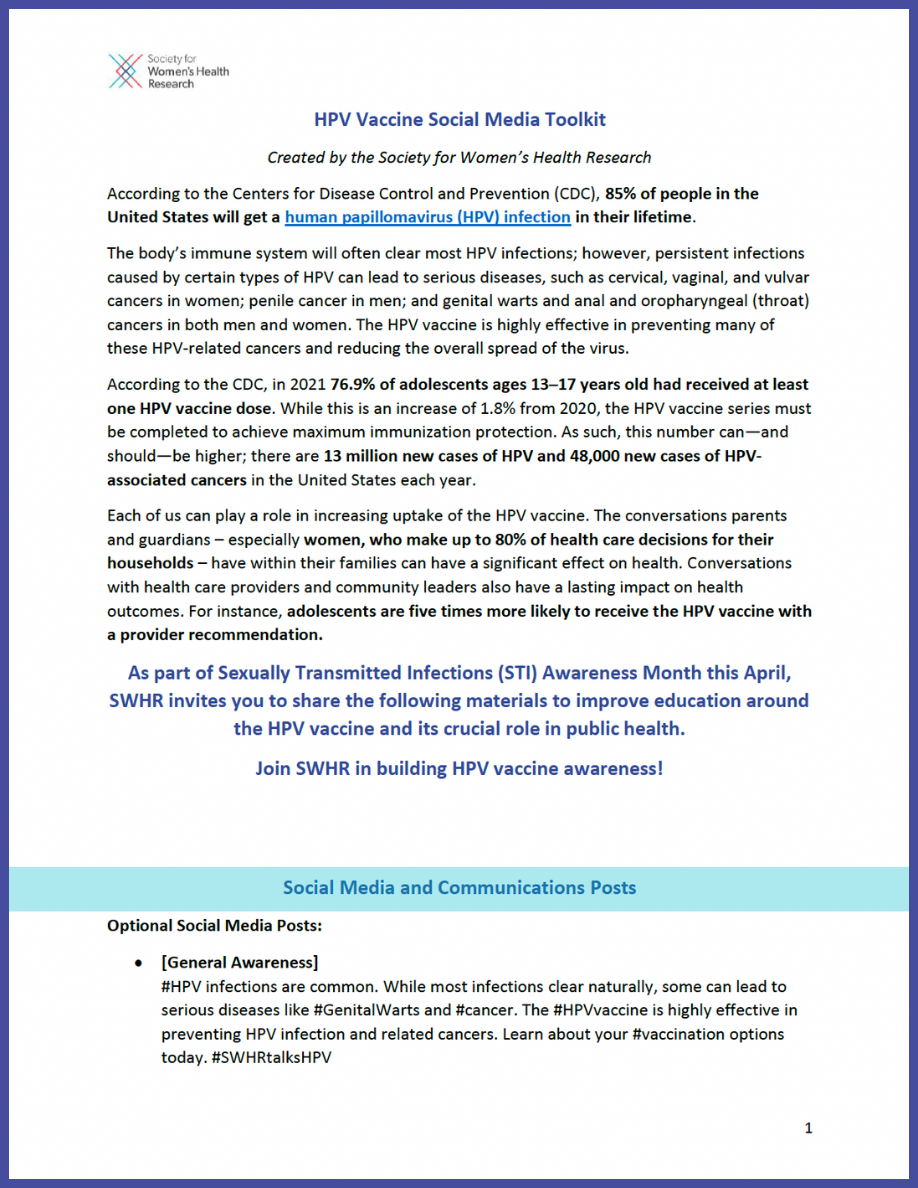The Society for Women’s Health Research (SWHR) published a paper in the Journal of Women’s Health, capturing the current landscape of HPV-related anogenital cancers, their effects on women’s health, and recommended areas in which to address gaps in primary and secondary prevention approaches to improve access and health outcomes for women. These insights were collected from a series of interdisciplinary meetings and events with expert researchers, clinicians, patient advocates, and health care policy leaders, convened by SWHR.
Human papillomavirus (HPV) infections cause more than 35,900 cancers annually in the United States, with cervical cancer being the most prevalent HPV-related malignancy in women. While a comprehensive approach to mitigating cervical cancer includes HPV vaccination (primary prevention), screening and treatment of precancerous lesions (secondary prevention), and diagnosis and treatment of invasive cancer (tertiary prevention), there are still opportunities to innovate and increase access that can also be adapted to address the unique clinical care gaps that exist with the other anogenital cancers.
Read The Full Paper Here



